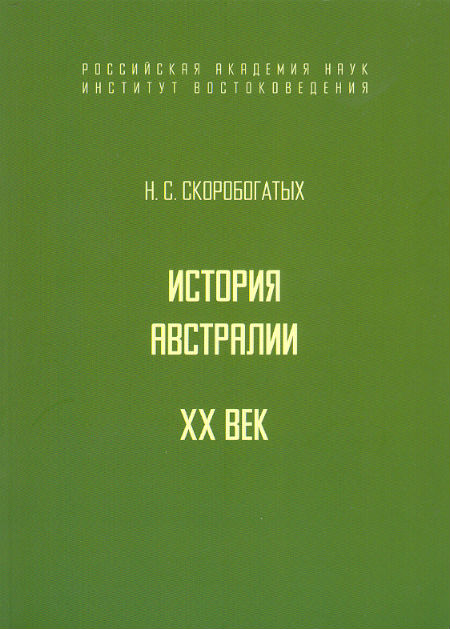Книга
 История Австралии. ХХ век
История Австралии. ХХ век

Скоробогатых Наталья Сергеевна
Ответственный редактор: Николаев Валерий Павлович
Москва, 2015, 452 стр.
Книга посвящена ключевому периоду истории Австралии – становлению и развитию федеративного государства, впервые в жизни страны охватившего территорию всего континента. Прослежены основные этапы на этом непростом пути – от участия в мировых войнах до изменений во внутренней политике и культуре Австралийского Союза на протяжении ХХ века. Работа основана на широком круге документальных источников, архивных материалов и литературы. Учтены существующие точки зрения на ключевые проблемы австралийской истории, предлагается взвешенный подход к их освещению на основе богатого фактического материала. Автор постаралась сочетать научный анализ с общедоступным изложением, чтобы сделать монографию интересной самому широкому кругу читателей – от студентов-австраловедов до специалистов, а также всех, кто хочет поближе познакомиться с историческими реалиями Австралийского Союза.
English version
The monograph consists of Introduction, seven chapters and Conclusion. The Introduction contains major characteristics of modern Australia and describes its historical development basic features. Chapter I deals with the main features of British Crown Colonies socioeconomic and political evolution at the turn of the XIX – XX century – process that lead to formation of the united state on the territory of all continent. Chapter II examines the making of the Australian Federation at the beginning of the XX century. First of all, that was the arrangement of political forces in the Federal Parliament and the reforms of the Liberal-Labor policy. The second significant event was the participation of the Commonwealth of Australia in the World War I, which became one of the most important marks in the country’s history. Chapter III illustrates the period of economic progress in the 1920s, succeed by the Great Depression, and country’s specific way out of that economic and political crisis. Chapter IV analyses the experience of Australia’s participation in the World War II and the serious correction of the foreign policy during that time. Chapter V touches one of the most painful period in Australian history – the 1970s, when the reconsideration of the main state principles established in the early years of the XX century began: reforms that were undertaken by the Australian Labor Party, the constitutional crisis of 1975, and the attempts to overcome its consequences. Chapter VI pitches upon the main reforms of the so-called “Australian perestroika”. Chapter VII characterizes the basic reforms offered by the Coalition parties under the leadership of J. Howard. Special attention was paid to the most sensitive problems of modern Australia: the immigration policy, multiculturalism, attitudes towards the Aboriginal population and foreign policy objectives. The Conclusion summarizes the main results of the Australian centenary pathway: from the Crown Colony to the independent state, from the closed economy under strict protectionist policy to the diversified economy enrolled in the system of the world economic relations, from a somewhat patriarchal society to the dominance of political correctness and free-and-easy morals. The work is based on a wide range of documentary sources, archives, and literature. The author tried to combine scientific analysis with understandable text to make an interesting monograph for a wide readership, such as students, specialists, and everyone who wants to become better acquainted with the historical realities of the Commonwealth of Australia.



